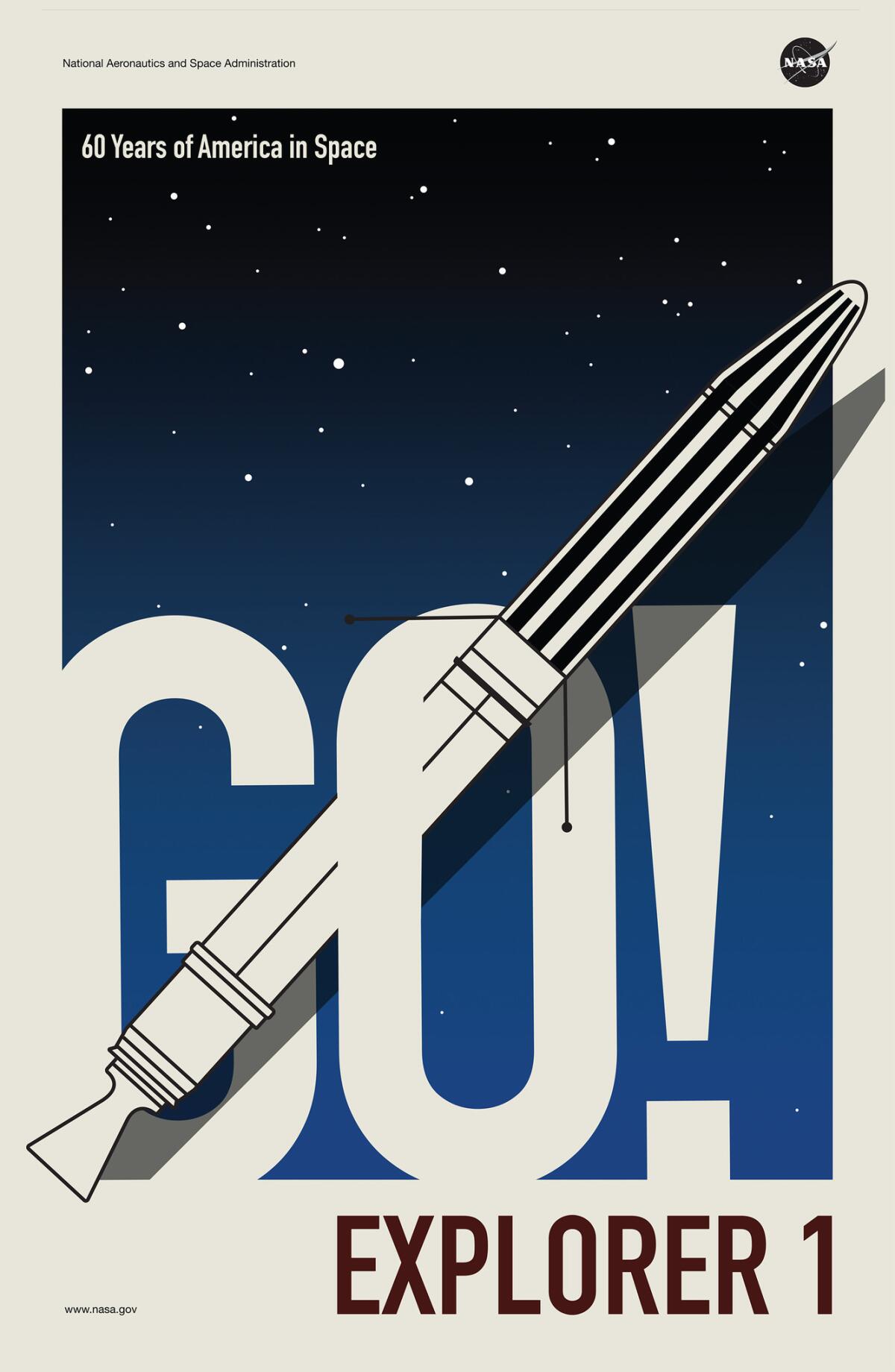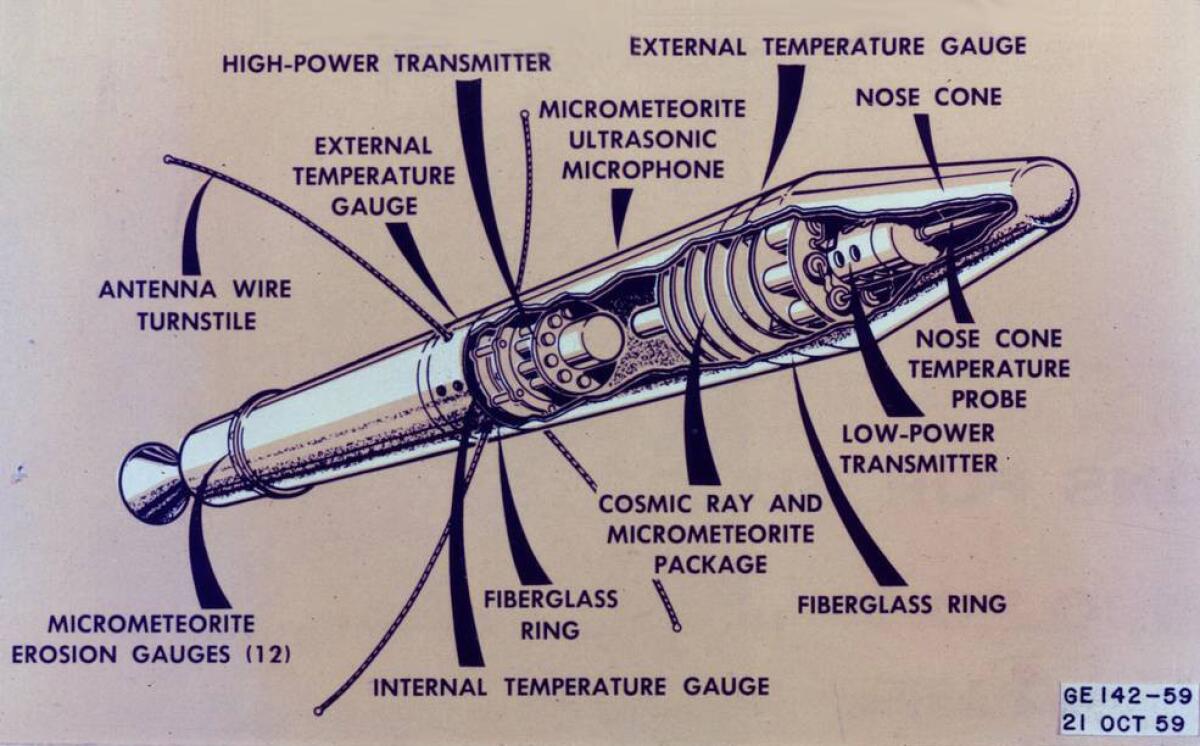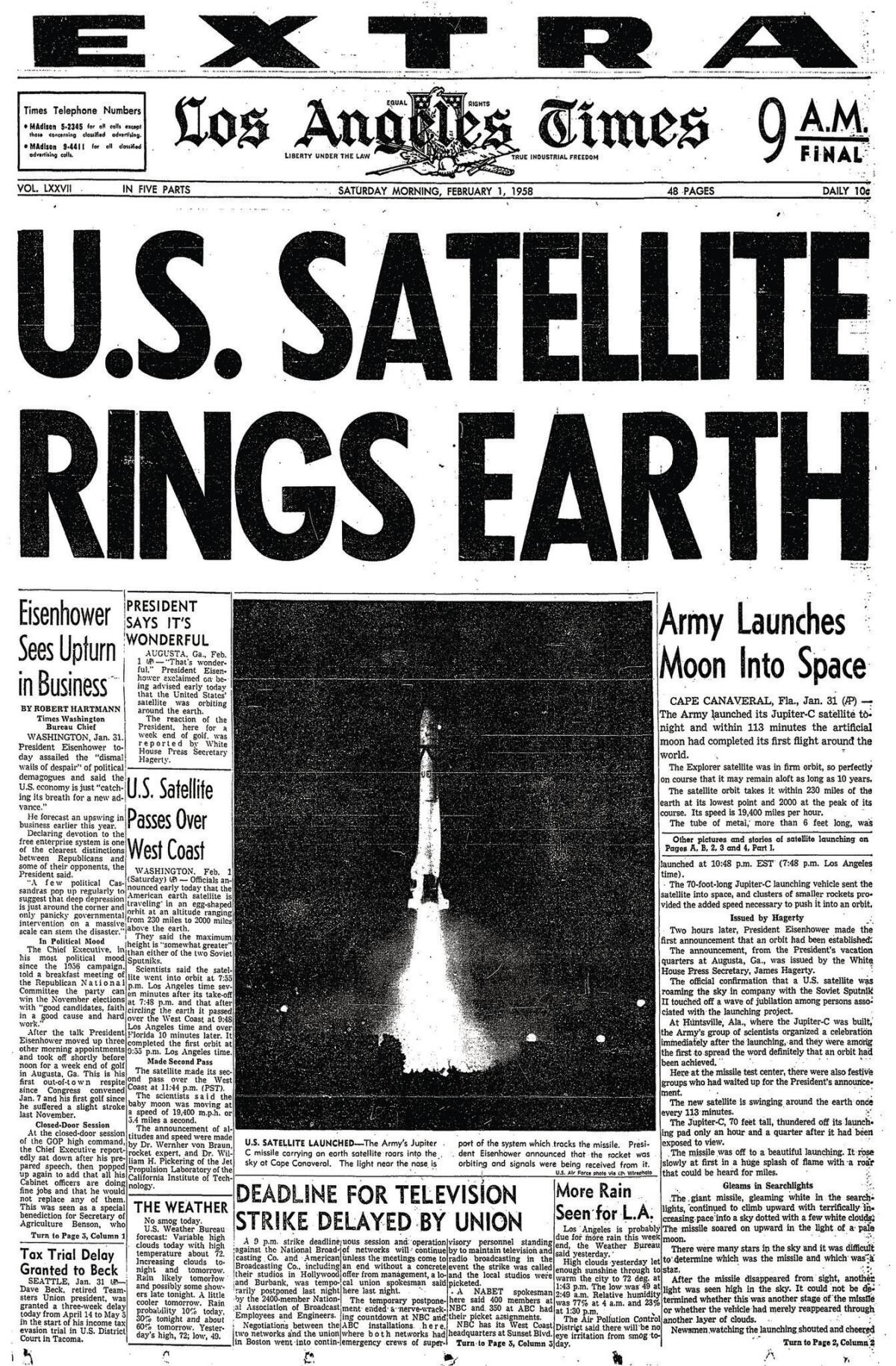Blast from the past: How Explorer 1, America’s first satellite, launched the space race and NASA
- Share via
Wednesday marks the United States’ 60th anniversary in space with the launch of Explorer 1.
The success of the fast-tracked mission, which carried the country’s first satellite into orbit, helped bring the little-known Jet Propulsion Laboratory in La Cañada Flintridge to scientific prominence and led to the creation of NASA.
“I really believe that Explorer 1 was the first landmark of space exploration,” veteran JPL engineer John Casani said in a NASA video celebrating the 50th anniversary of the launch. “Although it followed Sputnik, Explorer 1 had science instruments on it.”
Come along with us on a nostalgia-filled look back at how the U.S. entered the space race.

‘Flopnik’
In 1957, the United States’ efforts to catch up to the Soviet Union had gotten off to a stuttering start.
The International Geophysical Year, a worldwide scientific project, challenged would-be space-faring nations to put a satellite in orbit. The U.S.S.R. was the first to do so, sending Sputnik 1 and Sputnik 2 into space in the fall of that year.
But the United States’ early effort, the Vanguard rocket, exploded on Dec. 6, just seconds after lifting off. The satellite it was carrying only got as far as the bushes near the edge of the Cape Canaveral launchpad. Newspapers called it “Flopnik.”
Luckily, the United States had a backup plan: the Jupiter-C rocket and the Explorer 1 satellite.
JPL to the rescue
Pressure to compete with the Soviets led the government to direct the Jet Propulsion Lab, then operated by the Army, and the Army Ballistic Missile Agency in Alabama to use their Jupiter-C rocket to carry a satellite into orbit. The Jupiter-C rockets were designed to strike distant targets across the globe, so they were deemed more than capable of reaching orbit.

Just 87 days after the order came down, Jupiter-C lifted off from Cape Canaveral, Fla., and sent Explorer 1 into orbit on Jan. 31, 1958, at 10:48 p.m. EST. The satellite, which weighed less than 31 pounds, was equipped with instruments to measure cosmic rays.
Off the blocks in the space race
The minds behind the project — JPL Director William H. Pickering, Wernher von Braun of the U.S. Army Ballistic Missile Agency, and James Van Allen, who developed the cosmic ray detector — described the rocket and satellite at a late-night news conference two hours after the launch. At the media’s request, the trio of scientists lifted one of their props above their heads.
‘The artificial moon’
The day after the launch, the Los Angeles Times described the satellite as an “artificial moon” that could spend up to 10 years in space.
“The missile was off to a beautiful launching,” The Times reported. “It rose slowly at first in a huge splash of flame with a roar that could be heard for miles.”

“There were many stars in the sky and it was difficult to determine which was the missile and which was a star.”
Earth’s newest “moon” orbited the planet 58,376 times before it ran out of battery power and went dormant on May 23, 1958. It finally fell toward Earth and burned up in the atmosphere on March 31, 1970.

MORE IN SCIENCE
They ran the first lap of a long space race
‘OK. Let’s do it!’ An oral history of how NASA's Cassini mission to Saturn came to be
‘Hidden Figures' may feature NASA's history, but it resonates in the present




